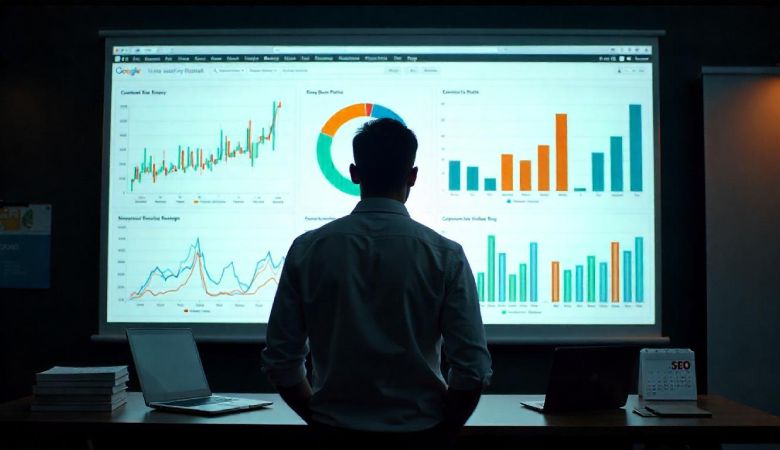10 Ways to Create Helpful Content + Examples and Checklist
Like it or not, we’re all at the mercy of Google’s ranking systems. These systems reward some sites with high rankings and wipe others off the search results overnight. It’s not all doom and gloom, though. Google provides fairly detailed guidelines about the type of content it’s looking for: helpful content.
We follow these guidelines here at Backlinko. For example, our SEO strategy guide dominates the search results. We aim for every article we publish to meet—or exceed—Google’s helpful content standards. This blog post will give you 10 strategies for creating people-first content. You’ll also see examples from real sites that excel at creating helpful content.
What Is Helpful Content?
Helpful content delivers what a searcher needs, whether they’re seeking information, researching options, or are ready to buy. It’s content written for people—not search engines.
The Google Helpful Content Update (HCU), first launched in 2022, was designed to reward people-first content while filtering out pages created primarily for search engines.
According to Google, helpful content:
- Provides trustworthy information backed by genuine expertise
- Delivers substantial value compared to competing results
- Demonstrates firsthand experience with the topic
- Creates a satisfying user experience
- Serves a purpose beyond just ranking in search results
Google uses a site-wide classifier that checks your whole domain, not just single pages, for helpfulness. This means a significant amount of low-quality content can drag down even your best pages.
The biggest changes to this algorithm update took place in late 2023 and early 2024. Some sites lost A LOT of organic traffic. As of March 2024, the Google Helpful Content Update is no longer a thing, but helpfulness isn’t going away. The HCU is now integrated into Google’s ranking core systems.
Creating helpful content is vital for your survival in search results.
10 Ways to Create Helpful Content That Google Rewards
Creating exceptional content is hard work, but it can pay off through high rankings and targeted traffic.
1. Incorporate Firsthand Experiences
To instantly make your content more helpful, add personal stories and real examples. This shows you actually know what you’re talking about—which is exactly what Google’s E-E-A-T guidelines (experience, expertise, authoritativeness, trustworthiness) prioritize.
Google advises against generic, regurgitated advice. By including personal experiences in your content—including your successes and failures—you’ll create the kind of content Google’s ranking systems reward, and your target audience wants to read.
Take this backlink guide from Backlinko founder Brian Dean, for example. He shared specific tactics and advice that actually worked for him, including real email templates he’s used for outreach and screenshots showing actual results.
When sharing personal experiences, focus on specific outcomes and measurable results. Google’s ranking E-E-A-T guidelines value demonstrable expertise, so explain exactly how and in what timeframe. Include photos and screenshots when possible to back up claims.
2. Add Expert Insights and Quotes
Expert quotes add authority and new perspectives to your content. They also help you meet Google’s helpful content expectations by providing insights readers can’t find elsewhere. Even if you have personal experience with a topic, expert opinions add dimension and alternative perspectives that make your content more comprehensive and helpful.
Source expert insights through:
- Original interviews (via email, phone, or video)
- Reaching out to experts on LinkedIn, X, or industry-specific sites and forums
- Attending industry events and networking for insights
- Using a media outreach platform
3. Create Content That Meets Search Intent
Understanding and satisfying search intent is fundamental to helpful content. For example, if someone searches “how to fix a leaky faucet,” they want clear, step-by-step instructions—not a sales page for plumbing services.
Consider these points from Google: After reading your content, will someone leave feeling they’ve learned enough about a topic to help achieve their goal? Will someone reading your content leave feeling like they’ve had a satisfying experience? If the answer to either question is “no,” your content isn’t fully addressing search intent.
To better meet search intent:
- Analyze the current top-ranking pages for your target keywords
- Note what format dominates (guides, lists, videos, etc.)
- Use a keyword research tool to check search results intent for each term and identify related questions and topics.
- Use clear headings that answer specific questions
- Include practical next steps or related resources
Demonstrate topical authority by addressing all relevant subtopics and common pain points in your content
4. Use Reputable Sources
Using high-quality sources (and citing them) is important for all sites. It signals to readers and Google’s ranking search engines that the information you’re sharing is reputable, accurate, and verifiable.
Google’s E-E-A-T guidelines place heavy emphasis on trustworthiness. Nothing builds trust faster than showing readers you’ve based your information on solid, reputable sources.
5. Hire Writers with Topical Experience
When it comes to helpful content, experience matters. Prioritize writers with backgrounds in your niche over generalists. This will benefit your content in multiple ways: more practical, nuanced advice that only comes from hands-on experience, insider tips that readers can’t find on other sites, and real examples and case studies that build immediate trust.
Even if you already have experienced writers, an expert review process will add another layer of credibility to your content. Investing in topic experts signals to readers and Google’s ranking search engines that you’re committed to delivering accurate content and genuine value, not just ranking for keywords.
6. Provide an Optimal Page Experience
Page experience is a critical component of helpful content. If your page loads slowly or is hard to navigate, readers will leave. It doesn’t matter how good your information is.
For the best results, cover all aspects of the page experience rather than focusing on isolated elements. Use PageSpeed Insights and Google Search Console’s Core Web Vitals report to establish your baseline metrics.
Use a tool like Semrush’s Site Audit to get weekly updates about your site’s technical performance. You’ll get automatic updates about issues affecting page experience, including loading speed, crawlability, broken links, large files, and more.
Ensure your site has a responsive design that works across desktops, tablets, and various mobile screen sizes. Use HTTPS across your entire site to build user trust and meet Google’s requirements for secure browsing.
7. Seek Information Gain
Google hasn’t said that “information gain” is a Google’s ranking factor, but it’s vital for helpful content. Information gain means adding unique value or new information not found elsewhere.
8. Conduct a Content Gap Analysis
A Content Gap Analysis helps you identify topics your competitors cover that you don’t. This ensures your content is comprehensive and provides information not readily available elsewhere. It demonstrates that you are committed to providing high-quality answers to user queries, aligning with the goals of Google’s ranking.
9. Develop a Strong SEO Strategy Guide
A robust SEO strategy guide is essential for driving organic traffic and improving search results. Your SEO strategy guide should cover all aspects of SEO, from keyword research to link building to technical SEO. Make sure to update your SEO strategy guide regularly to reflect the latest changes in the SEO landscape. By following a well-defined SEO strategy guide, you can improve your website’s visibility in search results and attract more qualified traffic.
10. Adapt to Google’s Ranking Updates
The SEO landscape is constantly evolving, and Google’s ranking algorithms are no exception. It’s crucial to stay informed about the latest updates and adapt your strategy accordingly. One of the best ways to do this is to follow industry blogs and attend SEO conferences. By staying up-to-date on the latest trends, you can ensure that your website remains competitive in search results.
Conclusion
In conclusion, crafting helpful content is not just about adhering to guidelines; it’s about genuinely serving your audience with expertise and unique insights. By focusing on firsthand experiences, expert opinions, and a commitment to quality, you can create content that stands out. Ultimately, this approach not only pleases search engines but also builds trust and provides lasting value to your readers.
Partner with our Digital Marketing Agency
Ask Engage Coders to create a comprehensive and inclusive digital marketing plan that takes your business to new heights.
Contact Us
Want to transform your content into a lead-generating machine? Contact Engage Coders today for a consultation, and let’s discuss how we can help you create content that not only ranks well but also drives conversions.









